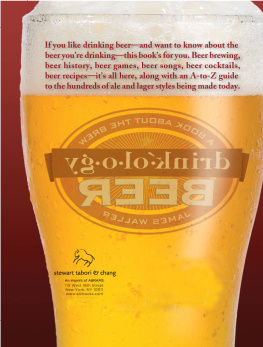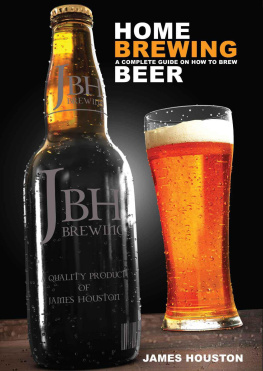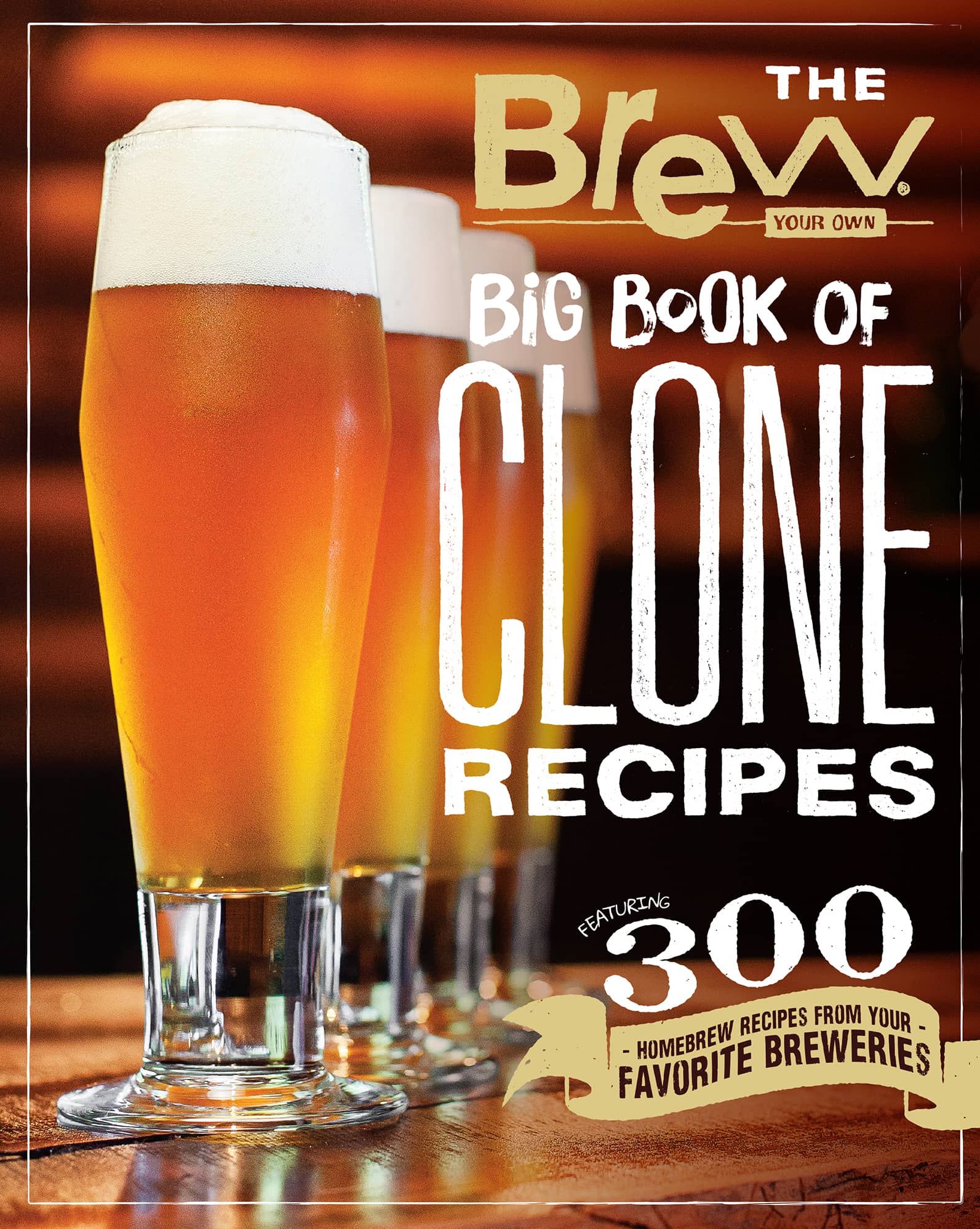
2018 Quarto Publishing Group USA Inc. Text 2018 Brew Your Own magazine
First published in 2018 by Voyageur Press, an imprint of The Quarto Group, 401 Second Avenue North, Suite 310, Minneapolis, MN 55401 USA. T (612) 344-8100 F (612) 344-8692 www.QuartoKnows.com
All rights reserved. No part of this book may be reproduced in any form without written permission of the copyright owners. All images in this book have been reproduced with the knowledge and prior consent of the artists concerned, and no responsibility is accepted by producer, publisher, or printer for any infringement of copyright or otherwise, arising from the contents of this publication. Every effort has been made to ensure that credits accurately comply with information supplied. We apologize for any inaccuracies that may have occurred and will resolve inaccurate or missing information in a subsequent reprinting of the book.
Voyageur Press titles are also available at discount for retail, wholesale, promotional, and bulk purchase. For details, contact the Special Sales Manager by email at or by mail at The Quarto Group, Attn: Special Sales Manager, 401 Second Avenue North, Suite 310, Minneapolis, MN 55401 USA.
Digital edition: 978-1-59233-804-7
Softcover edition: 978-1-59233-762-0
Library of Congress Cataloging-in-Publication Data
Title: The Brew your own big book of clone recipes : featuring 300 homebrew recipes from your favorite breweries / editors of Brew Your Own.
Other titles: Big book of clone recipes | Brew your own.
Description: Minneapolis, MN, USA : Voyageur Press, an imprint of The Quarto Group, [2018] | Includes bibliographical references and index.
Identifiers: LCCN 2017046466 | ISBN 9780760357866 (sc)
Subjects: LCSH: Beer. | Brewing. | Brewing--Amateurs manuals. | LCGFT: Cookbooks.
Classification: LCC TP577 .B7393 2018 | DDC 641.87/3--dc23 LC record available at https://lccn.loc.gov/2017046466
Acquiring Editor: Thom OHearn
Project Manager: Alyssa Bluhm
Art Director: James Kegley
Cover Designer: Faceout Studios
Layout: Diana Boger
WELCOME TO THE WORLD OF CLONES!
FOR MORE THAN TWENTY YEARS,Brew Your Own magazine has been invited into living rooms, kitchens, backyards, and garages to lend a hand as readers enjoy the greatest (and most rewarding) hobby on Earth. We take pride in being the go-to resource for homebrewers at every level and in providing approachable, reliable, and current information to help you improve your brewing. While our focus includes all aspects of the hobby and community that embodies itingredients, techniques, equipment, activities/events, and everything in betweenthe feedback from our readers has always confirmed that popularity of one important part of every issue: the recipes.
We love coming up with our own recipes and enjoy brewing new styles. We enjoy altering a previous batch to get it just right. Even the excitement of testing new ingredients never seems to fadein fact it often becomes even more enjoyable with the experience and understanding that is gained.
All that said, brewing proven clone recipes of our favorite commercial beers will always hold a special place in our hearts. These are the recipes that made most of us fall in love with craft beer, and they likely played a hand in making us believe that we too can brew our own beer at home. It may be a classic such as Sierra Nevada Pale Ale, a newer favorite such as the Alchemists Heady Topper, a hard-to-find beer from a Trappist brewery, or even a little-known recipe from the brewpub one town over whichever beer changed your life, it will not be forgotten. But why stop at reminiscing about that beer? Youre a homebrewer! All you need is a recipe and the right ingredients, and soon you can have a whole batch of your own to share with others and compare to the original.
In this book, we have fully updated three hundred of our favorite clone recipes (and we threw in a few new ones!). These recipes came from your letters asking for advice from the Replicator (BYOs regular column where we work with your favorite craft breweries to pull together the clone recipes that arent available anywhere else), were selected by our editors as great examples of styles, and were picked by our trusted authors as beers that have changed their own lives. Our hope is that youll find some of your favorites and be introduced to new favorites as well.
What sets these recipes apart from the thousands of clone recipes that circulate online is that these recipes have all been formulated in collaboration with, and in some instances have come directly from, the brewers who made the beers famous in the first place. They have been carefully researched, tested, and tweaked so the resulting beer will most closely resemble the beer that you are buying and trying to re-create. We are proud to put our name behind this book, which is the most extensive collection of clone beer recipes available on the market today.
These recipes are approachable for homebrewers at every level, no matter your experience or the equipment you brew on. Almost every one is formatted in both all-grain and extract-based versions.
Of course, we could not have done any of this without our many authors and the tremendous brewers who shared their notes, advice, and recipes with us for the purpose of spreading the love of brewing. To that, we say cheers!
Dawson Raspuzzi, editor, Brew Your Own
CLONING BASICS & RECIPE STANDARDS

CLONING brewing a near-exact replica of a commercial beerhas a time-honored place among homebrewers. For one thing, its a great risk-aversion technique: If youre brewing something new and youre worried about getting a dog of a recipe, a simple way to increase your odds of getting a decent recipe is to use a clone recipe. Someone must think its okay, right? People pay to drink that beer! Then again, maybe you just love a certain beer. Theres nothing wrong with brewing an homage to one of your favoritesespecially if you cant get it regularly where you live. Those are both good reasons to clone, but they ignore the best one: Clone brewing will make you a more competent, more confident brewer. Youll build your brewing skills by not only executing a recipe but by adjusting it to your system and fine-tuning it. Cloning requires that you not only engage your brewing skills but also your ingredient and process acumen. Of course, tasting is an important part of the process as well, so youll flex your sensory evaluation muscles. Cloning is like cross-training for brewers!
So, youve decided to clone a beer. How do you go about it?
TAKE DEAD AIM
Step one is to find your target. This goes far beyond picking the beer you want to clone. By find your target, we mean you should get a bottle, can, or growler of that beer and start picking it apart using your senses: organoleptic evaluation time! Specifically, you want to note any and all flavor perceptions that stand out. What makes this beer unique? It might only be one thingOld Speckled Hen is a pretty ordinary English pale ale except for what tastes like a pound of butter in every bottle. Youll find that any beer youre trying to clone has one or two sensory hooks that really stand out and make it memorable. Those are the flavors you want to focus on. You can miss your gravity by a few points or produce a beer thats two shades darker than its original version, but you need to nail its one or two defining features. For example, if you make a Schlenkerla Marzen clone that doesnt smell like a grilled sausage, then youve failed. Find that one thing and then, as golfer Harvey Penick said, take dead aim.














